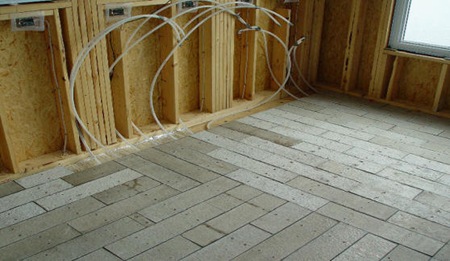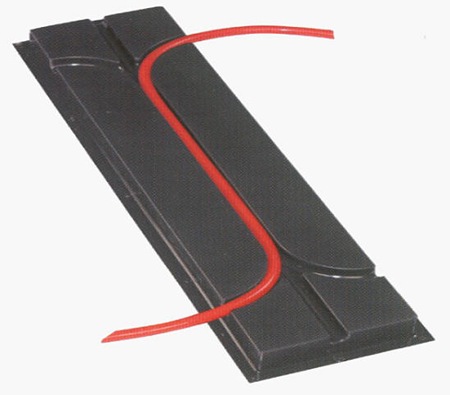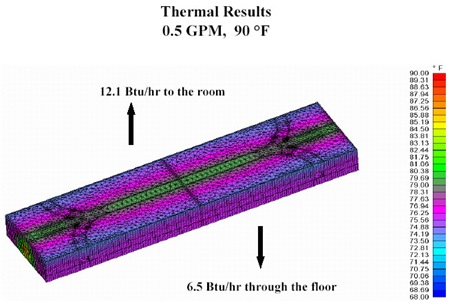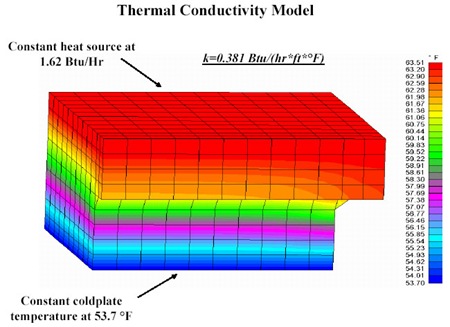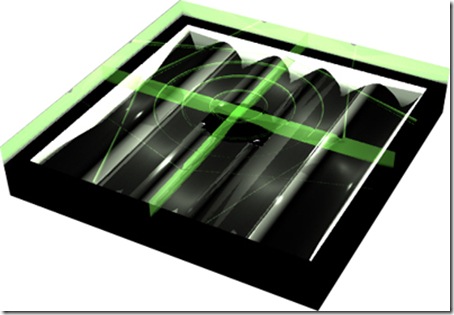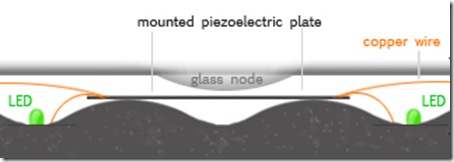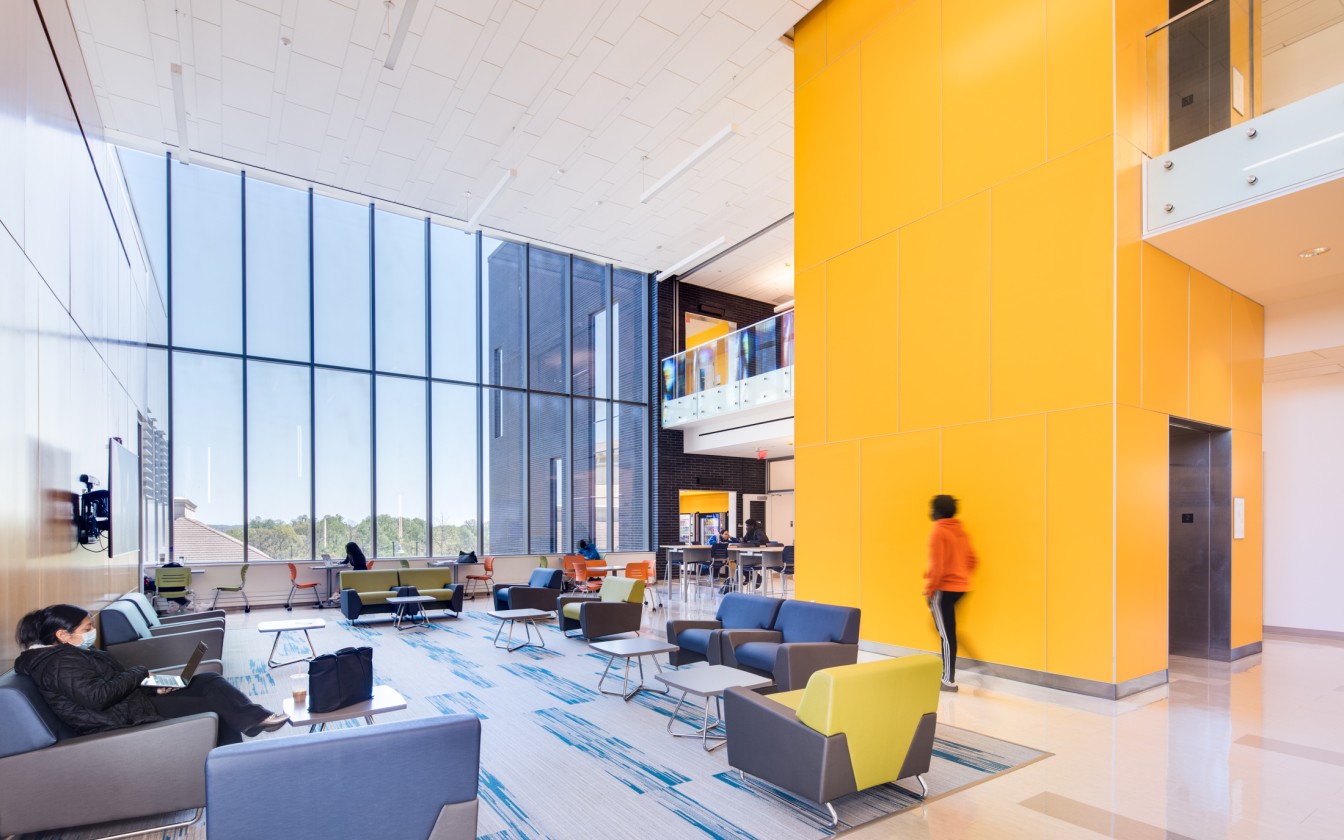1006 Morton Street
Baltimore, MD 21201
410.576.9131 | Email
December 10 2009
POWERleap Flooring
Radiant Heating: GCS Modular Radiant Flooring Panels
The laminate flooring is a modular, hydronic radiant floor system which is designed for easy installation, simplified maintenance and energy efficiency. Like most energy efficient radiant floor systems, GCS panels heat space using a network of plastic tubes circulating preheated water (or a glycol/water solution). Think of this system as a grid of pre-milled slots designed to hold the hot water tubes in place under the finished floor. What makes these panels unique is their manageable size, easy installation and energy efficiency.
GCS Radiant Inc. claims that installation can be done by as few as one person, with a recommendation of two. Each panel is a sandwich of concrete and a plastic substrate molded to receive the hydronic tubing. Units are small enough to be easily handled by installers and are fastened by only four screws. If there are any problems with the hydronic tubes the affected panels can easily be removed (unscrewed) to make repairs. This is not the case with hydronic systems poured into slabs, as the slabs must be cut to reach the tubing.
Panels are also designed to spread heat evenly within the substrate. The concrete mix in each unit is able to absorb and spread the heat effectively and creates more thermal lag in the space, leading to more even heating and reducing the number of cold areas on the floor where tubing does not occur. The accompanying images show thermal characteristics of the radiant floor units.
It is encouraging to see material manufacturers submit their products for this type of testing and evaluation. It appears as though GCS Radiant Inc. has allowed data about heat movement in concrete surfaces to affect the design of their units. The result is a modular radiant floor system with the benefits of both and accessible and a poured concrete slab radiant system.
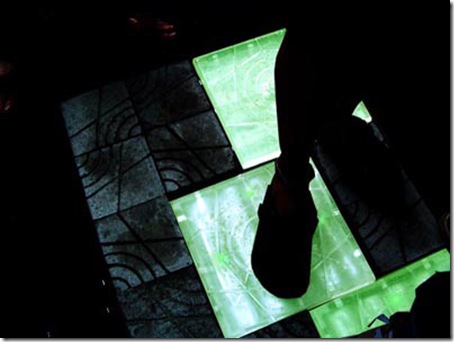 POWERleap Flooring is a cool concept. It's the brainchild of Elizabeth Redmond, a 22 year old recent grad from the
POWERleap Flooring is a cool concept. It's the brainchild of Elizabeth Redmond, a 22 year old recent grad from the
University of Michigan School of Art and Design. The glass and concrete tiles use the POWERleap utilizes the phenomena of piezo-electricity [electricity from applied stress] discovered in the 1880's by the Curie Brothers to convert human kinetic energy into a usable power.
As Ms. Redmond states: We have designed a flooring system that will harness your exerted kinetic energy, and use it to generate electricity for us to enjoy. By integrating these interfaces that generate electricity from our daily activities in public and semi-public built environments, each individual will have the ability to generate electricity for their community. Joggers through Central Park would directly power the lights that make it safe for them to jog at night. Through use of energy generating tiles, people are constantly involved in the very activities that create the electricity they need. Dutifully offsetting their recreational consumption, they?re contributing to the greater energy good.
Recent Posts
Reimagining Harborplace to Create Space for Both Private Development and Expanded Public Space » Lawyer's Mall Reconstruction Progress » Confronting the Conventions of Customary Practice » Reconceived Facades: New Roles for Old Buildings » Ivy Bookshop Opens for Business! »
Categories
Yellow Balloon Baltimore » Products + Technology » Industry + Practice » Other » Architecture »
Links
Organizations
- USGBC Baltimore Regional Chapter »
- AIA - American Institute of Architects »
- USGBC »
- The Walters Art Museum »
- Green-e »
- Center for Building Performance and Diagnostics (CMU) »
- Green Globes »
- Prefab Lab (UT) »
- Center for Sustainable Development (UT) »
- Architecture 2030 »
- Bioneers »
- Street Films »
- FreeCycle »
- Chesapeake Bay Foundation »
- Archinect »
- BD Online - The Architects Website »
- National Wildlife Foundation »
- Natural Resources Defense Council »
- Overbrook Foundation »
- Merck Family Foundation »
- Ecology Center »
- New Building Institute »
- Neighborhood Design Center »
- The Leonardo Academy »
- ZigerSnead Architects LLP »
- The Rocky Mountain Institute »
- Urban Habitats »
- ACORE - American Council on Renewable Energy »
- Parks and People Foundation of Baltimore »
- Open Society Institute of Baltimore »
- Natural Capital Institute »
- Passive House US »
- Svanen Miljomark »
- Green Restaurant Association »
- Rocky Mountain Institute »
- Green Exhibits »
- Green Roundtable »
- John Elkington - SustainAbility »
- SustainAbility »
- Building America »
- Endangered Species Program - Fish and Wildlife Service »
- Congress for the New Urbanism »
- Urban Land Institute »
- Cool Roof Rating Council »
- Montgomery County (MD) Public Schools Green Building Program »
- National Institute of Standards and Technology Software »
- Scientific Certification Systems »
- Community Greens »
- CBECS »
- CASE - Center for Architecture Science and Ecology »
Interesting Sites
- The Ecologist »
- Treehugger »
- Grist »
- WIRED »
- Planet Architecture »
- MiljoBloggAktuellt - Environmental News Blog (Swedish »
- Sustainable Design Update »
- Eikongraphia »
- World Architecture News »
- The Cool Hunter »
- Design Center »
- ZEDfactory »
- Architen Landrell Associates Ltd. »
- Environmental Graffiti »
- businessGreen »
- Best Green Blogs Directory »
- Groovy Green »
- EcoGeek »
- Urban Ecology »
- Locus Architecture »
- Urbanite »
- A Daily Dose of Architecture »
- Adaptive Reuse »
- Audacious Ideas »
- Big Green Me »
- NOTCOT »
- Sustainable Baltimore »
- Thoughts on Global Warming »
- Green Maven »
- WorldChanging »
- Go For Change »
- Building Green »
- Home Energy Magazine »
- Home Energy Blog »
- FEMA Map Service- Federal Emergency Management Association »
- Architectural Graphic Standards »
- E-Wire »
- Post Carbon Cities »
- Alt Dot Energy »
- Whole Building Design Guide »
- B'more Green »
- EJP: Environmental Justice Partnership »
- Baltidome »
- OneOffMag »
